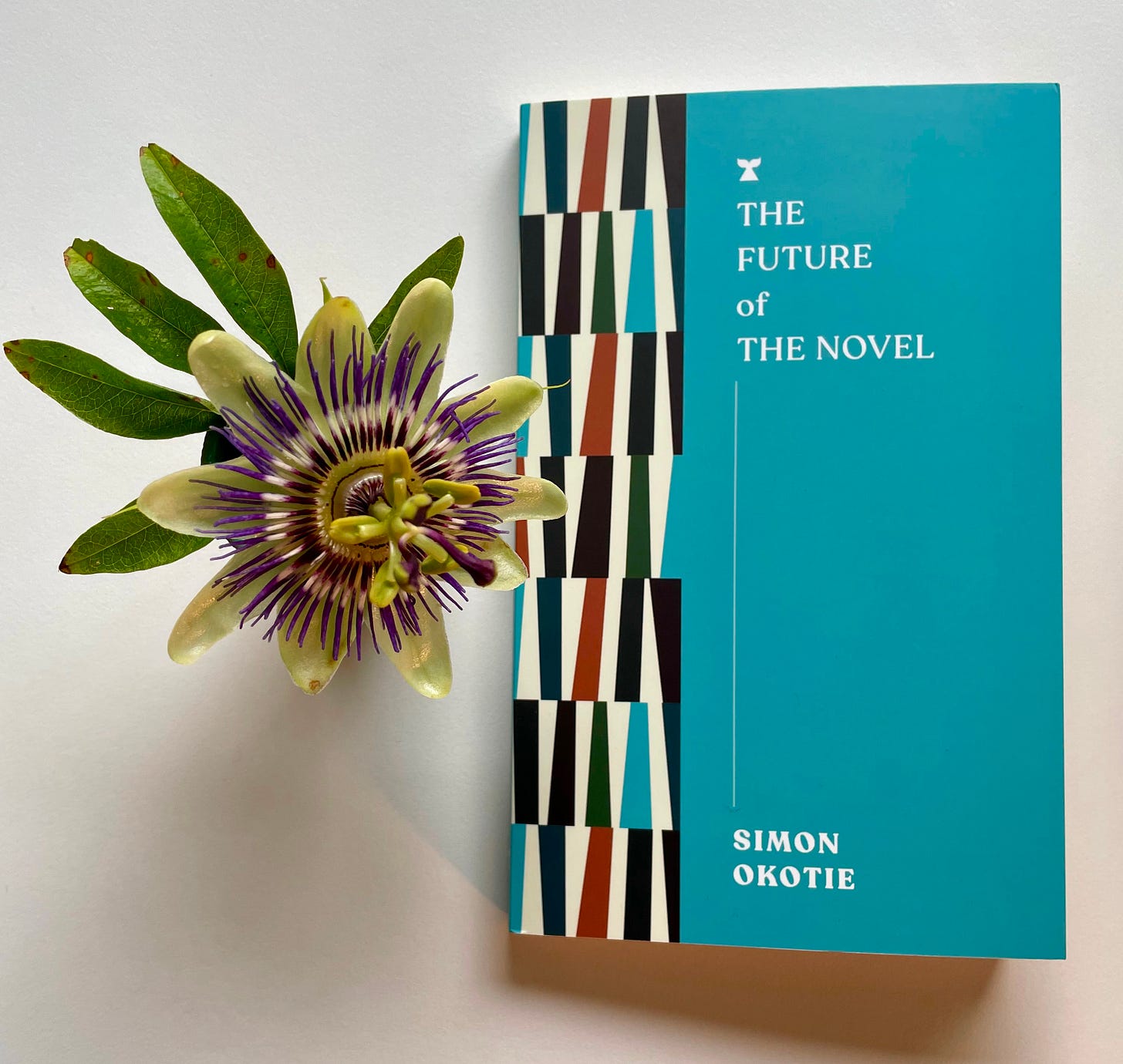In this feature, the last piece in our series exploring AI, Simon looks at the ways in which today’s discussions about publishing and fiction-trained generative AI models can be seen as a continuation of a long, ongoing exploration of the art of novel, from Don Quixote to Italo Calvino’s imagined ‘literary automaton’, to André Gide‘s exploratory Les Faux-Monnayeurs (The Counterfeiters) and E.M Forster’s reflections on Gide and others in his 1927 collection, Aspects of the Novel.
Issues of copying and theft are central to contemporary debates about AI and the novel. It can take years to write a full-length work of fiction – something fewer of us might be tempted to do “if anyone could rip the thing off without consequence”, as the writer and programmer Alex Reisner wrote in The Atlantic last year. That, at least, is the sentiment behind many of the copyright-infringement lawsuits against companies that are “using tens of thousands of copyrighted books—at least” without permission to ‘train’ generative-AI models, with one of the lawsuits alleging “systematic theft on a mass scale”. Yet the tech companies involved, such as OpenAI and Meta, argue in response that this is Fair Use under existing copyright laws: “their language models ‘learn’ from books and produce ‘transformative’ original work, just like humans.” There is, on this basis, no copying or theft involved: the swallowed texts are never disgorged verbatim but are, instead, transformed into entirely new work.
Some publishers are more accepting of this position than others. Late last year, Literary Hub reported that HarperCollins was selling its authors’ work to an anonymous tech company. Daniel Kibblesmith had posted screenshots on Bluesky of an email he’d received from the agency that had represented him on a children’s book, with the book’s publisher, HarperCollins, offering a non-negotiable fee of $2,500 for the right to use the book to help ‘train’ the tech company’s AI model. The Bookseller described further aspects of the deal: that the licence to use the material was limited to three years, that there were certain restrictions on the output from the model and that any copyright breaches would be enforced. Kibblesmith declined the offer.
HarperCollins’ position contrasts with that of Penguin Random House. The publisher’s copyright page in new and reprinted PRH books now says, “No part of this book may be used or reproduced in any manner for the purpose of training artificial intelligence technologies or systems”. Penguin had already published a statement saying it would ‘vigorously defend’ the intellectual property of its authors. Yet, as The Verge indicates, these measures may offer scant protection against big tech’s Fair Use legal arguments.
The modern novel has always been adept at exposing, parodying and ironising the conventions of fiction.
A couple of years ago, I was commissioned to write a creative piece in response to Italo Calvino’s essay ‘Cybernetics and Ghosts ’. Delivered in Turin and other Italian cities in November 1967 and later published in The Uses of Literature, Calvino’s essay explores the possibility of a ‘literary automaton’ – a machine able to conceive of and compose poems and novels. The commission came a couple of months before James Yu launched Story Engine, a new product within Sudowrite, his generative fiction tool, that is capable of writing an entire novel within days. Sudowrite had already semi-automated the writing process for particular types of genre fiction (as Adi Robertson writes in The Verge), but Story Engine was different. Sudowrite’s standard interface enabled authors to paste in sections of their work and have the model generate additional text. Story Engine expanded this process into every aspect of novel writing: from an initial idea to generating (and amending) a synopsis, from expanding an outline to creating distinct chapters, and finally, to generating and refining characters and plot.
It seemed an opportune moment for me to test the capabilities of these generative fiction tools, particularly given the theme of the commission. Having fed five hundred words or so of my work-in-progress into the machine, the output from it was more or less consistent with that of many other fiction writers’ experience: the generated prose was so derivative, cliché-ridden and conventional as to be unusable. (The anthology was eventually published last year, and my piece, while informed by the model’s output, contained none of its AI-generated words.) Yet I found the process fascinating and the output stimulating and useful precisely because it so rapidly extracted and distilled all that was conventional in the form. After all, from the moment Don Quixote loses his mind from reading too many tales of chivalry, adopting their plots, characters and style for his own adventures, the modern novel has always been adept at exposing, parodying and ironising the conventions of fiction. And I could see immediately that this process was something generative AI could only accelerate.
The novel (in its modern form) has, on this basis, always been an appropriative technology – one that adopts the ‘clothing’ of plot and character while standing up to their ‘tyranny’ – with the advent of AI simply being the latest iteration of that. This is not to say that ethical considerations are irrelevant or that novelists shouldn’t defend their work – far from it: the technology risks both killing the goose that lays the golden eggs and replacing those eggs with ‘paraboloids ’, to adapt a metaphor E. M. Forster used in his seminal analysis of the literary form, Aspects of the Novel, in a description of André Gide’s 1925 novel Les Faux-Monnayeurs (The Counterfeiters), which was itself an exploration of the art of the novel.
But AI is undoubtedly here to stay, and those working in this venerable tradition of the art form of the future should have nothing really to fear from it.
For more on the novel’s history as an ‘appropriative technology’ and further insight into the future of fiction, Simon’s book The Future of the Novel is out now.










This is a thoughtful piece, but I disagree with the conclusion that "those working in this venerable tradition of the artform of the future should have nothing really to fear from it." I started playing around with AI fiction with Chat GPT in late 2022 to see what it could do. The result was wooden and unimpressive. In recent months I've tried out other, newer AI tools. It's getting better, and it's moving fast. Stylistically, AI is capable of much more now than it was just two years ago. The more it is trained on fiction--and the more publishers like HC get in bed with AI companies--the more capable AI will become at generating nuanced fiction (or what appears to be nuanced fiction), sidelining the writers of original works of fiction.
Very interesting, Simon, and the ensuing debate. I have had some small experience with AI by participation in a university course being taken by a friend, which involved writers sending in to her a full story plus a two-sentence synopsis to be fed into the AI platform, the two versions of each story then being collated and submitted as course work. The resulting AI version was simply another synopsis, barely longer than the original synopsis; no trace of nuance, character or even plot. A point of interest noted by the person taking the course was that all the endings of the AI versions were uniformly upbeat, uplifting - 'positive'.
I accept that there has been improvements since then, but I'm curious - and sceptical - as to how AI handles irony - a key component, as you say, in anti-novels; would it even recognize that gap, or slippage?
Another test.
Prompted by your coverage in your book of Calvino's essay (available, incidentally, in Picador's paperback essay collection entitled The Literature Machine 1989), I have just reread it after many years. His counter-example was what struck me in my original reading and still does. It hinges on puns, more specifically those which embody significance, as humour or unexpected insight. AI or any combinatorial system, can generate puns ad nauseam; could it spot the jokes?
Calvino thinks not - those hidden insights thrown up when 'things click into place' have significance only to 'the ghosts' - Ryle's 'ghosts in the machine', i.e. human consciousness.
By coincidence, the current issue of the TLS has a review of a biography of Roger Penrose. In it, the reviewer mentions Penrose's argument around consciousness, viz. that it cannot be computational. His argument/insight stems from Godel's Incompleteness Theorem: that in any consistent formal system, 'there is a sentence in the language of that system - one that says effectively "I am not provable" - that is true but not provable in the system. Since you and I can recognize the truth of such a sentence, Penrose argues, it follows that consciousness can't be computational...'
That same argument applies to AI.
So, AI as a diagnostic tool - exposing the cliches and conventionalities - fine. There are already too many humanly-authored novels published (and reviewed) that might just as well have been AI-generated. Maybe the use of AI to weed those out will allow more genuinely experimental, innovative works, more anti-novels even, to be published - and reviewed.